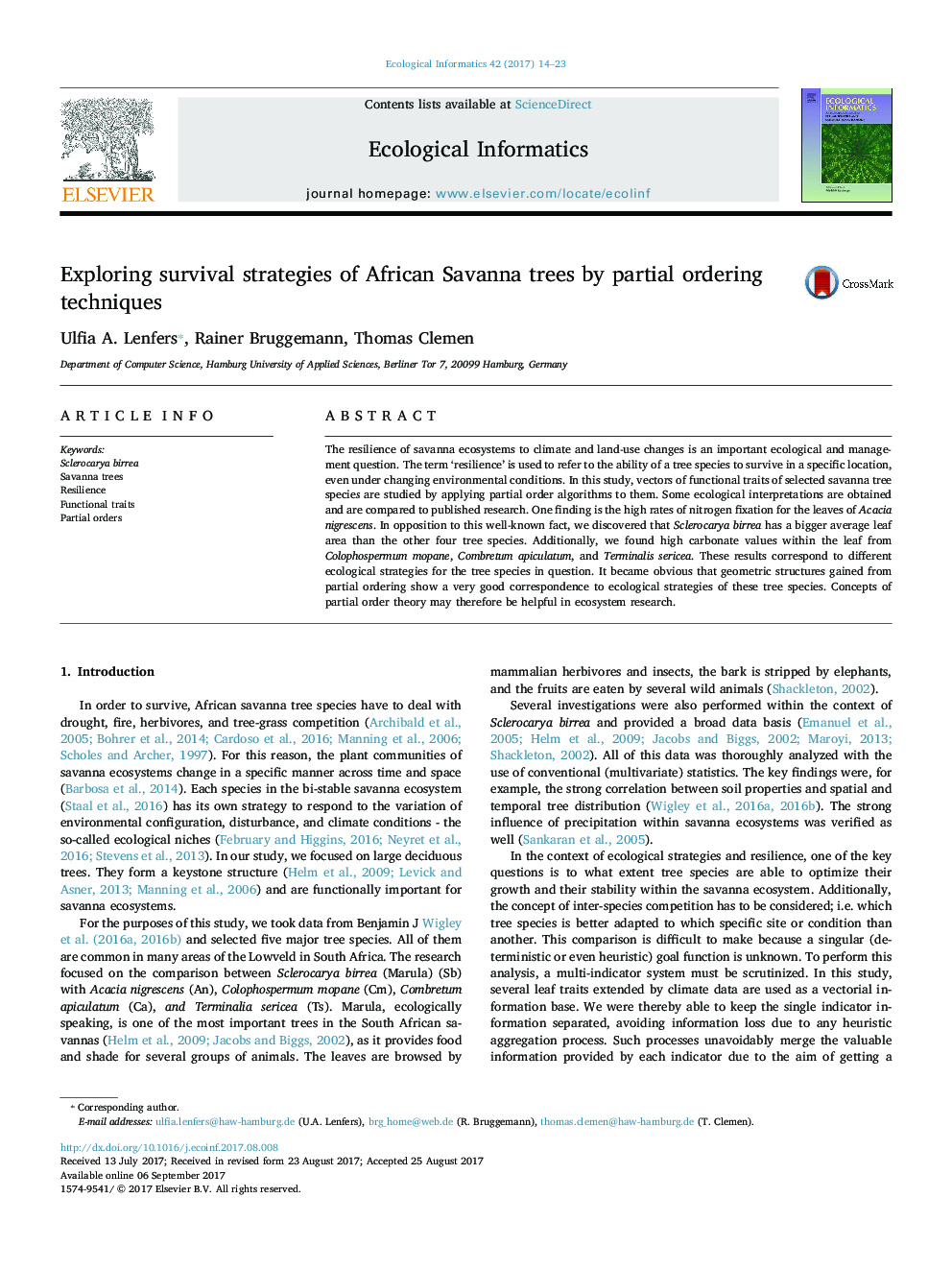| Article ID | Journal | Published Year | Pages | File Type |
|---|---|---|---|---|
| 5741881 | Ecological Informatics | 2017 | 10 Pages |
â¢Ecological strategies derived by partial order theoryâ¢High average leaf area (ALA) typical in Sclerocarya birreaâ¢High leaf nitrogen concentrate (LNC) found in Acacia nigrescensâ¢High leaf carbonate concentrate (LCC) within Colophospermum mopane e.g.
The resilience of savanna ecosystems to climate and land-use changes is an important ecological and management question. The term 'resilience' is used to refer to the ability of a tree species to survive in a specific location, even under changing environmental conditions. In this study, vectors of functional traits of selected savanna tree species are studied by applying partial order algorithms to them. Some ecological interpretations are obtained and are compared to published research. One finding is the high rates of nitrogen fixation for the leaves of Acacia nigrescens. In opposition to this well-known fact, we discovered that Sclerocarya birrea has a bigger average leaf area than the other four tree species. Additionally, we found high carbonate values within the leaf from Colophospermum mopane, Combretum apiculatum, and Terminalis sericea. These results correspond to different ecological strategies for the tree species in question. It became obvious that geometric structures gained from partial ordering show a very good correspondence to ecological strategies of these tree species. Concepts of partial order theory may therefore be helpful in ecosystem research.
Graphical abstractDownload high-res image (339KB)Download full-size image
